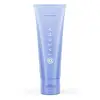What's inside
What's inside
 Key Ingredients
Key Ingredients

 Benefits
Benefits

 Concerns
Concerns

 Ingredients Side-by-side
Ingredients Side-by-side

Microcrystalline Cellulose
AbsorbentOryza Sativa Powder
Sodium Lauryl Phosphate
EmulsifyingSodium Lauroyl Glutamate
Sodium Stearoyl Glutamate
CleansingWater
Skin ConditioningSodium Cocoyl Glutamate
CleansingLauryl Betaine
CleansingSodium Lauroyl Methylaminopropionate
CleansingCamellia Sinensis Leaf
PerfumingPapain
Skin ConditioningOryza Sativa Bran Extract
Skin ConditioningPropanediol
SolventDextrin
AbsorbentEthylhexylglycerin
Skin ConditioningKaolin
AbrasiveTocopherol
AntioxidantPhytosteryl/Octyldodecyl Lauroyl Glutamate
Skin ConditioningDipotassium Glycyrrhizate
HumectantSilica
AbrasiveButylene Glycol
HumectantPhenoxyethanol
PreservativeCI 77492
Cosmetic ColorantCI 77007
Cosmetic ColorantMicrocrystalline Cellulose, Oryza Sativa Powder, Sodium Lauryl Phosphate, Sodium Lauroyl Glutamate, Sodium Stearoyl Glutamate, Water, Sodium Cocoyl Glutamate, Lauryl Betaine, Sodium Lauroyl Methylaminopropionate, Camellia Sinensis Leaf, Papain, Oryza Sativa Bran Extract, Propanediol, Dextrin, Ethylhexylglycerin, Kaolin, Tocopherol, Phytosteryl/Octyldodecyl Lauroyl Glutamate, Dipotassium Glycyrrhizate, Silica, Butylene Glycol, Phenoxyethanol, CI 77492, CI 77007
Water
Skin ConditioningMicrocrystalline Cellulose
AbsorbentPropanediol
SolventSodium Cocoyl Glutamate
CleansingGlycerin
HumectantAcrylates Copolymer
Sodium Caproyl Methyltaurate
CleansingCoco-Betaine
CleansingParfum
MaskingCamellia Sinensis Leaf
PerfumingOryza Sativa Powder
Chondrus Crispus Extract
Skin ConditioningSodium Hyaluronate
HumectantBetaphycus Gelatinum Extract
BleachingLauryl Glucoside
CleansingPotassium Hydroxide
BufferingPolyquaternium-39
Disodium EDTA
Phenoxyethanol
PreservativeEthylhexylglycerin
Skin ConditioningSodium Benzoate
MaskingSodium Carbonate
BufferingAlcohol
AntimicrobialWater, Microcrystalline Cellulose, Propanediol, Sodium Cocoyl Glutamate, Glycerin, Acrylates Copolymer, Sodium Caproyl Methyltaurate, Coco-Betaine, Parfum, Camellia Sinensis Leaf, Oryza Sativa Powder, Chondrus Crispus Extract, Sodium Hyaluronate, Betaphycus Gelatinum Extract, Lauryl Glucoside, Potassium Hydroxide, Polyquaternium-39, Disodium EDTA, Phenoxyethanol, Ethylhexylglycerin, Sodium Benzoate, Sodium Carbonate, Alcohol
 Reviews
Reviews

Alternatives
Ingredients Explained
These ingredients are found in both products.
Ingredients higher up in an ingredient list are typically present in a larger amount.
Camellia Sinensis Leaf is the leaf of the tea plant. These leaves are used to make white, oolong, green, and black tea.
Tea leaves have many benefits. It contains polyphenols, a strong antioxidant. Antioxidants help fight off free-radical molecules that damage skin cells. The antioxidants in green tea neutralize free-radicals from the sun. This gives the skin some extra UV protection, but should not replace sunscreen.
Many components of tea have anti-inflammatory properties. Polyphenols and L-theanine help soothe the skin and reduce irritation. L-theanine is an amino acid that makes up most of the amino acids found in tea leaves. The caffeine in Camellia Sinensis Leaf Extract helps calm inflamed blood vessels.
Research has shown both drinking Camellia Sinensis Leaf Tea (green tea, white tea, oolong, black tea) and applying it to the skin can help boost skin elasticity and hydration. Studies also show using tea extract may reduce sebum, or oil, production.
Learn more about Camellia Sinensis LeafEthylhexylglycerin (we can't pronounce this either) is commonly used as a preservative and skin softener. It is derived from glyceryl.
You might see Ethylhexylglycerin often paired with other preservatives such as phenoxyethanol. Ethylhexylglycerin has been found to increase the effectiveness of these other preservatives.
Microcrystalline Cellulose is another name for refined wood pulp. It is used as an emulsifier and mattifying ingredient. As an emulsifier, it helps keep ingredients together.
Oryza Sativa Powder is created by grinding dried seeds of rice, Oryza Sativa.
It is used to add volume and increase the thickness of a product. This ingredient may also have mildly exfoliating properties.
Rice contains numerous antioxidants which may help with anti-aging, such as vitamin E.
Learn more about Oryza Sativa PowderPhenoxyethanol is a preservative that has germicide, antimicrobial, and aromatic properties. Studies show that phenoxyethanol can prevent microbial growth. By itself, it has a scent that is similar to that of a rose.
It's often used in formulations along with Caprylyl Glycol to preserve the shelf life of products.
Propanediol is an all-star ingredient. It softens, hydrates, and smooths the skin.
It’s often used to:
Propanediol is not likely to cause sensitivity and considered safe to use. It is derived from corn or petroleum with a clear color and no scent.
Learn more about PropanediolSodium Cocoyl Glutamate is a gentle cleanser and surfactant. It is the sodium salt of the Cocoyl Glutamic Acid and comes from coconut oil. As a surfactant, it helps lift dirt and oil to be washed away.
Sodium Cocoyl Glutamate also has an emolliating effect and can help leave the skin feeling soft.
Water. It's the most common cosmetic ingredient of all. You'll usually see it at the top of ingredient lists, meaning that it makes up the largest part of the product.
So why is it so popular? Water most often acts as a solvent - this means that it helps dissolve other ingredients into the formulation.
You'll also recognize water as that liquid we all need to stay alive. If you see this, drink a glass of water. Stay hydrated!
Learn more about Water